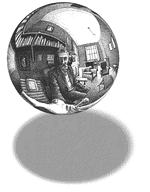How did the piles of personal effects get at Auschwitz?

Dear AnswerMan,
How did the museum at Auschwitz I amass tons of human hair, dentures, toothbrushes, artificial limbs, cans of Zycon(sic) gas and other tragic “momentos” of the camps?
Pauline Friedman

AnswerMan Replies:
At the end of the war, and to this day piles of—what in any other context would be considered trash—has been presented to the general public as evidence of a Nazi extermination program.
I am not certain what people are supposed to think when this material is presented. Did the Nazis kill people for their shoes, dentures, spectacles, and hair? And if this is true, why was this piled at the concentration camps? Are we to believe these items were some sort of gruesome trophies like the scalps of Indians, or the shrunken heads of Amazon savages?
The truth is much more banal.
Auschwitz was a major railroad center for prisoner traffic, and contained a large population of prisoners. When prisoners arrived with luggage, the luggage was tagged and placed in storage in a section in Birkenau known as “Canada.” Prisoners were given prison garb and assigned a block for housing. When the prisoner was transferred to another camp, the prison garb was taken and the prisoner's luggage returned. If a prisoner died, the personal effects were given to relatives if such could be located. If not, the effects became property of the state and were put into a government recycling program. In addition, the mounds of items you describe do not necessarily represent the possessions of dead people. As early as January 1940 the occupied territories implemented a program of collecting scrap material including old leather and scrap metal for reuse. Due to war shortages special details were sent out to collect old shoes, eyeglasses, etc. The material was sorted, bundled and sent to factories to be used in the manufacture of other goods.
In short, this material has been taken out of context in order to misrepresent its meaning. People immediately leap to conclusions and that is whole point. It is meant that they react strongly when viewing piles of items, most of which was collected by reclamation teams going door to door gathering refuse for scrap. Of course, they are not told how the stuff got there. I know I was a bit embarrassed when I found out.
The cans of Zyklon B were in Auschwitz because Auschwitz had a terrible problem with lice. The human body louse carries a terrible disease which spreads rapidly. In 1942 an epidemic of louse-born typhus hit Auschwitz and Birkenau camps killing hundreds of prisoners a day. Even camp doctors and staff got the disease.
In order to fight the disease, the lice causing the infections had to be exterminated. When a block of prisoners became infected with the lice, the prisoners were showered, their uniforms were steam cleaned to kill the lice and nits, and the building and block mattresses were fumigated using Zyklon B. Zyklon B was designed to be used as a fumigant. That is how it was used and that is why it was found at Auschwitz.
When prisoners arrived at the camp, they were deloused before they were assigned to a block. The delousing process included the shaving of prisoners' hair to get rid of lice and nits. The hair was fumigated and saved. People were not killed to obtain the hair. Cutting hair, as part of the delousing process, saved lives.
In spite of the efforts by the Auschwitz staff to end the epidemic, people died from typhus in large numbers from 1942 until the camp was evacuated in early 1945. It is estimated around 125,000 people died at Auschwitz and Birkenau while it was operated by the Nazis.
Bibliography
- Butz: THE HOAX OF THE TWENTIETH CENTURY (1977)
- Faurisson: “Impact and Future of Holocaust Revisionism”, THE JOURNAL OF HISTORICAL REVIEW Volume 19, Number 1, (January/February 2000)
- Pressac: AUSCHWITZ: Technique and operation of the gas chambers (1989)
- Staeglich: THE AUSCHWITZ MYTH (1986)
- Weber: “High Frequency Delousing Facilities at Auschwitz” (1999)
Bibliographic information about this document: n/a
Other contributors to this document: n/a
Editor’s comments: n/a
